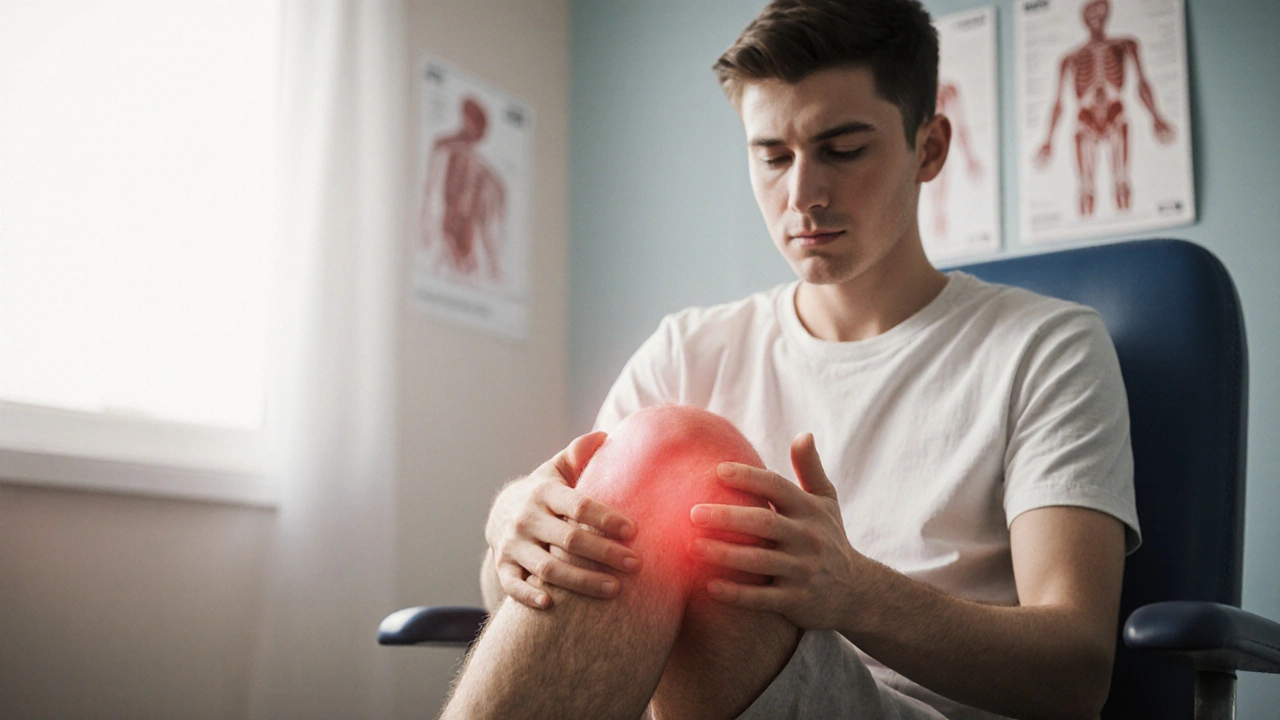Joint Bleeds: Understanding, Managing, and Preventing Bleeding Episodes
When dealing with joint bleeds, bleeding into a joint cavity that causes sudden swelling, pain, and limited movement, many people think of rare genetic conditions, but the reality is broader. Intra‑articular hemorrhage most often shows up in individuals with Hemophilia, an inherited deficiency of clotting factor VIII or IX that predisposes to uncontrolled bleeding. It can also appear in other bleeding disorders, after trauma, or during intense sports. Recognizing the signs early—tightness, warmth, and loss of range of motion—can prevent long‑term joint damage.
The cornerstone of acute treatment is Factor Replacement Therapy, administering the missing clotting factor to halt bleeding and restore normal clotting. This therapy can be given intravenously on demand or as a prophylactic schedule to keep factor levels above a protective threshold. Rapid infusion reduces blood accumulation, limits pressure on cartilage, and shortens recovery time. For patients on a prophylactic regimen, adherence is critical; missed doses are a leading cause of breakthrough joint bleeds.
Key Steps to Manage Joint Bleeds
Beyond clotting support, several practical measures protect the joint. First‑line is immobilization: a splint or brace keeps the joint still while the clot stabilizes. Ice packs applied for 15‑20 minutes every hour for the first 24‑48 hours help control swelling. Pain relief is usually achieved with acetaminophen; NSAIDs are avoided because they can worsen bleeding. After the acute phase, gentle range‑of‑motion exercises, guided by a physiotherapist, restore flexibility and prevent stiffness.
If bleeding episodes recur, chronic inflammation—known as Synovitis, inflammatory thickening of the joint lining caused by repeated bleeding—may develop. Synovitis can erode cartilage, leading to arthropathy. Treatment options include corticosteroid injections, synovectomy (surgical removal of inflamed tissue), or newer radio‑frequency ablation techniques. Early detection through imaging is essential; an MRI can reveal fluid collections, synovial thickening, and early cartilage loss that plain X‑rays miss.
Imaging also guides decisions about when to intervene surgically. For example, a large hemarthrosis that does not resolve after 48‑72 hours may need arthrocentesis (needle drainage) to remove excess blood and relieve pressure. In severe cases, arthroscopic debridement clears damaged tissue and reduces the risk of future bleeds. The choice between conservative and surgical management depends on bleed size, joint involved, and the patient’s overall health.
Prevention extends into daily life. Maintaining a healthy weight lessens stress on weight‑bearing joints like knees and ankles, which are common sites of bleeds. Low‑impact activities—swimming, cycling, or yoga—keep muscles strong without overloading joints. Patients should also wear protective gear during high‑risk sports and avoid activities that involve sudden twists or heavy impacts. Regular check‑ups with a hematologist ensure factor levels are optimized and that prophylactic regimens are adjusted as the patient ages or changes activity levels.
Nutrition plays a subtle but supportive role. Vitamin K‑dependent clotting factors benefit from a balanced intake of leafy greens, while calcium and vitamin D support bone health. Some clinicians recommend anti‑inflammatory diets rich in omega‑3 fatty acids to curb synovial inflammation, though evidence is still emerging. Always discuss supplements with a healthcare professional to avoid interactions with clotting medications.
Living with joint bleeds can feel overwhelming, but a structured plan—prompt factor replacement, targeted immobilization, monitored rehab, and proactive lifestyle choices—greatly reduces long‑term joint damage. Below you’ll find a curated collection of articles that dive deeper into each of these areas, from detailed guides on factor therapy to the latest advances in synovitis treatment. Explore the resources to fine‑tune your approach and keep your joints moving smoothly.

